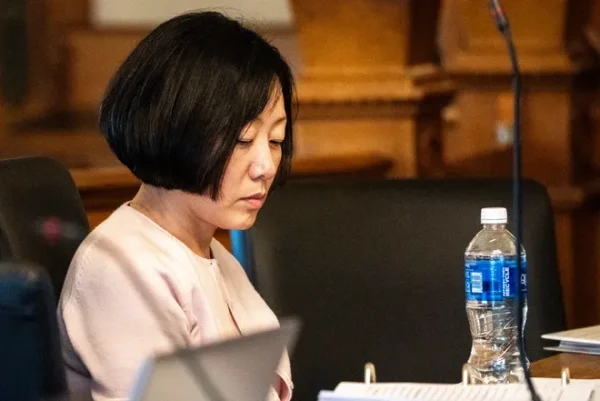A diverse education
November 10, 2005
It’s not news to anyone at Simpson that the college just isn’t very diverse.
Nor is it a radical idea to make a call for more diversity in the student body as well as the faculty here. But the issue is much larger than that.
There are a lot of reasons Simpson isn’t diverse. One is that it’s hard to convince people to move here. Iowa isn’t a well-known destination – it’s not on the coast, it doesn’t have a major metropolis to attract new businesses or residents and the state certainly doesn’t have balmy tropical weather year-round. If people haven’t grown up in the Midwest, Indianola, Iowa, is not a location at the top of their lists for a place they’d like to study or teach at.
A second reason Simpson struggles with diversity is the attitudes of the people here. The Simpson community is predominantly white, and while most people don’t go out of their way to ostracize anyone of a different race, they also don’t go out of their way to welcome them. The emphasis is on “most” here – some students, faculty and staff do take the time to get to know our minority students and professors. However, the few who make an effort can’t always make up for the indifference of the majority, so it can be difficult for any minority to feel comfortable at Simpson.
OK, so there isn’t anything Simpson College can do about Iowa’s intermittent less-than-desirable weather. But the college can work to change its attitudes.
At a recent faculty meeting President Byrd presented a plan for attracting more minority and international students to the college. In short, he wants to offer full-ride scholarships to minority students. Provided Byrd can help Simpson raise the money for these scholarships, it’s a great idea.
By considering what Simpson can offer minority students, Byrd is on the right track. Often, the Simpson community is interested in increasing diversity because it offers the white majority a new perspective of the world. To put it cynically, the college is interested in what an international student has to offer Simpson. This approach, while it’s well-meant, fails to consider what would make a minority student or professor want to come here.
But offering full-ride scholarships to attract minority students is only half the battle. Simpson still has to address the way these students are treated when they arrive. Again, it isn’t that this college is racist, and it isn’t that Simpson encourages segregation. It appears the community is just indifferent.
The college does have programs in place to promote diversity, or at least to promote acceptance, since a truly diverse classroom can be hard to find. There are two Cornerstones designed to focus on diversity – the Minority Perspective and the Global Awareness May Term. In addition, all Liberal-Arts Seminars for freshmen are required to focus on diversity for at least one session.
Clearly, a student cannot graduate from Simpson without considering a point of view other than his or her own. However, a grand total of only six credit hours seems inadequate to cover the subject of diversity when 128 hours are required for graduation. And a single session that directly addresses the topic in an LAS is unlikely to create the spirit of acceptance that Simpson values so highly in its students.
If Byrd creates more opportunities to bring minority students to Simpson, the college should be prepared to teach its students to value the diversity they bring. This cannot be done through their presence alone. To change Simpson’s overall attitude of indifference toward the minority students and professors who do come here, the college should focus on more education about diversity.
Would it be too much to add another session about diversity to every LAS? Or perhaps to require students to complete a diversity lab, much like the Scientific Perspective Cornerstone? A diversity lab could be a one-credit diversity project or hands-on volunteer commitment – or many other things, as long as it served to generate individual thought on the values and necessity of diversity.
If Simpson is serious about increasing its diversity, it not only needs to address the actual presence of diversity, but the attitudes toward it. It should be noted that some LAS instructors address diversity every day, and a handful of professors require their students to volunteer as part of their courses. However, this is certainly not a college-wide focus. It needs to be. Simpson can offer scholarships to minority students, but this must be combined with an increase in the education on diversity for all students.












